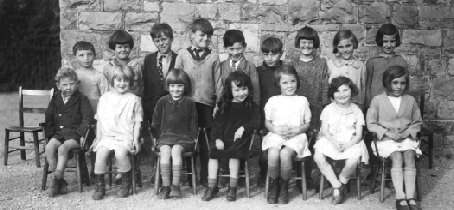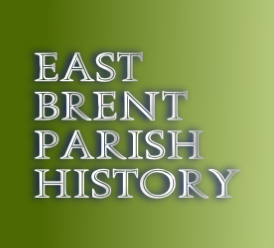


Poor Mary
by Lynne Waters
Edmund Manchip, a sailor on HM Royal Yacht in 1871 had been born in the Axbridge Workhouse. Somerset, there was no birth certificate.........
Read how the research behind what sometimes appear to be just names in a record, can bring to life the real life and sometimes sad story of our forbears.
Back in 1979 I went on a night-school course to find out how to trace my family history. I was able to whiz back to 1871 in no time, my grandfather and great-grandfather had been born in Portsmouth in 1899 and 1871 respectively, but although the 1871 census revealed that great-great grandfather, Edmund Manchip, a sailor on HM Royal Yacht then stationed in Portsmouth had been born in Axbridge, Somerset, there was no birth certificate.
Never mind, I decided, the baptism will be in the Axbridge parish register. I arranged a holiday in Somerset and visited the Records Office, but was disappointed to discover that there was nothing about him in the parish records at all.
There was another avenue open though, I could look at his naval records. I went to the PRO, and spent a whole day fruitfully looking at his career through the Admiralty records. His Attestation Record, dated March 1861, physically described this Boy of the 2nd Class who was entering HMS Training Ship Implacable, confirmed his place of birth as Axbridge, and gave me his exact birth date in 1845. I traced his rise through the ranks and found all the ships he served on until he left the Navy in 1873.
Edmund had married in 1869 at Portsmouth Registry Office, but I still had no clue as to his parentage because the column for Father’s Name was left blank. Being new to genealogy I was stumped for a while, until I began to wonder if he may have been illegitimate or perhaps born in an institution.
I wrote to Somerset Records Office and back came the successful answer. Yes, he was born at Axbridge Workhouse. His mother was Mary Anne Manchip, a single woman of Compton Bishop. Fascinated to know more, I returned to the Records Office and with my husband helping, spent a whole day reading through reel after reel of microfiche trying to find Mary Anne and Edmund in the 1851 census.
We found a Mary Anne Manchip at East Brent, working as a servant at the vicarage, but she didn’t have her child with her. She gave her age as 25 and had been born at Bridgwater.
So where was the 5 year old Edmund? I couldn’t locate him. Was he with relatives, at school, adopted? He was not still at the workhouse. The mystery was to remain for more than twenty years.
Meanwhile I located a marriage for Mary Anne at East Brent in 1854 to Jeffery Coombes which told me that her father was Isaac Manchip, a brickmaker. I found a baptism in 1819 for a Mary Anne Manchip, daughter of Isaac and Jane, at St Mary’s Bridgwater, the only Mary Anne born to a father called Isaac. Her parents had been married the year previously. Her mother was Jane Stone, a widow when she married Isaac. Over the next several years I extracted every Manchip entry from the Bridgwater parish records and built up a huge data base, drew up trees within trees and cross checked it all back against the censuses. I eagerly collected every reference to the family name that I could find. There were very few Manchips in other parishes. There were other Mary Manchips born around the same time at Bridgwater but working meticulously I was able to eliminate them all so that ultimately I was sure that Isaac and Jane’s daughter was the same Mary Anne who had given birth to Edmund at Axbridge Workhouse.
The Manchips were an interesting family to study; in one branch of well-to-do furniture makers, a son had followed his father as Mayor of Bridgwater. They were employers and employed in multitudinous trades, a tailor, butcher, bakers, cabinet makers, schoolmasters, inn keepers, painters and decorators, and a great many, including women, were employed as brick and tile makers.
Alas, the Accounts books of the Bridgwater Overseer of the Poor bear witness to the many Manchips who regularly sought relief from the parish.
Gradually I pieced together more parts of the story. Isaac, the brickmaker, had died in December 1823. The burial entry says that he was aged 28 but I have so far never been able to find his baptism to substantiate this. Poor Jane, widowed for the second time but now with the four-year-old Mary Anne, had to fall on the parish for relief. The Overseers Accounts record regular payments made variously to Jane Manchip, the widow Manchip, or Jane Manchip and child, of at first two shillings and sixpence weekly in the year 1824, and then one shilling and sixpence weekly until 1827. After 1824 there appears mysteriously the bracketed word (Weston) after her name. I tried to come to terms with the sad and desperate lives of misery they must have lead at this time. As I couldn’t find them on the 1841 census in the area either, the mystery deepened.
Meanwhile I carried on researching the later life of Edmund. I was successful in finding out a great deal about his family but sorry to find that he too had died aged only thirty-seven years.
Although my curiosity about Mary Anne and the whereabouts of her little son continued, I thought my research into the mystery was at an end and so my files sat in a cupboard untouched for several years.
The arrival of the internet renewed my interest and from time to time I dabbled, adding new pieces of information gleaned from the census web-sites. Imagine my joy on the day that I found the 5 year old Edmund!
How intriguing! He was listed as "lodger" in the household of agricultural labourer John Trego, 50, and his wife Martha, 48, at 5 West Row, Weston super Mare. Also in the family were a son 15, a daughter 12, and another lodger, 6 year-old John Glover, who turned out in fact to be Martha’s grandson.
Now I realised that the (Weston) entries in the Overseer’s book had referred to Weston-super-Mare, and that the widowed Jane and little Mary Anne may have gone there as far back as 1824. Perhaps Jane came from there before marrying Isaac?
I explored the possibility that the Tregos were in some way related and investigated that family. As yet I have not found any links, although this is complicated by the fact that Jane was a widow so I don’t know her maiden name. The only explanation I could come up with was that Edmund was "farmed out" from the workhouse to this family for payment.
By now twenty-five years had elapsed since I began this research.
In the summer of 2006 I was one day surfing websites to find information about workhouses when I came across a link to Weston-super-Mare’s Family History page which in turn led me to Ms Pat Hase who has specialist knowledge. I e-mailed her with my story and she alerted me to several pieces of useful information. The first was the burial of Jane Manchip, aged 52 at Weston super Mare in 1833. There were also three references to Mary Anne Manchip, two of which I had already seen in the Somerset Records Office. The third was a document in the PRO!
For a fee and a wait of two weeks I was able to download the PRO documents. They comprised a correspondence between Mr George Wickham, Overseer of the Poor for the parish of Compton Bishop, and The Poor Law Commissioners at Somerset House, London.
In his letter of 26 August 1845 Mr Wickham queries whether or not his parish is legally liable to pay the costs incurred by the pauper Mary Anne Manchip, as she was not of that parish. He goes on to describe the circumstances which led her to apply for "restitution" at Axbridge Union Workhouse, as described by Mary Anne herself when she had to appear before the Board of Guardians. She reported that she "had been born at Weston super Mare within this union, engaged as a servant and lived there about twelve months; removed with her master to Bristol and remained with him about eight months more, leaving him at that time and having gained no settlement since, but finding herself with child at Newport in Wales, she wished to get home to her parish. On her way home she engaged a place in a carrier’s wagon which brought her from Bristol to Axbridge where she slept one night and paid for her lodgings, the following day she applied to the Relieving Officer of the Weston super Mare District of the Axbridge Union House."
He requested her to go before the Board of Guardians for their advice, and their decision was that the Union House being situated in the Parish of Compton Bishop, the pauper must be placed to that parish.
The reply of 13 October 1845 from the Poor Law Commissioners ruled that this decision was correct. After corresponding with the Guardians they ruled that Mary Anne was destitute at the point of asking for help from the Union House, and as that House was in the parish of Compton Bishop then the said parish was legally liable.
What a wretched situation? Like something out of a Thomas Hardy novel. How that poor girl must have suffered, all alone. But how marvellous to have those letters, which actually tell what happened in her own reported words. She doesn’t tell me the father of her child, that I will never know. Neither will I know how much contact she had with Edmund and how much he knew of the story, but I have since found a possible 1841 census entry for her in Newport.
The Union House was probably instrumental in finding her a placement as servant at the vicarage at East Brent and in that village she met her husband Jeffery Coombes and had further children. Perhaps there is a researcher of that family who knows more ?
The message to fellow genealogists is never to give up – one day you too may find the answers - even if it takes 27 years!
Now I must find my next step, that missing baptism for Isaac Manchip circa 1795!
©Lynne Waters 2006
1851
Mary Manchip servant at East Brent Vicarage
This feature is reproduced by kind permission of Lynne Waters.
from her article in the Weston Super Mare Family History Soc. journal November 2006
If you would like to contact Lynne for more about her family history. Please contact me John, webmaster. And I will put you in touch. Email
